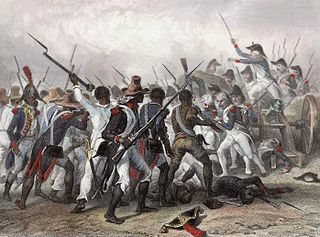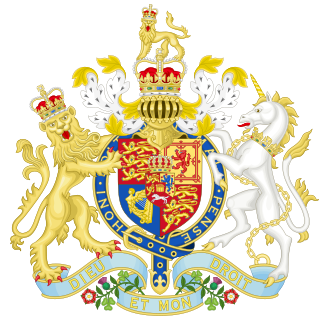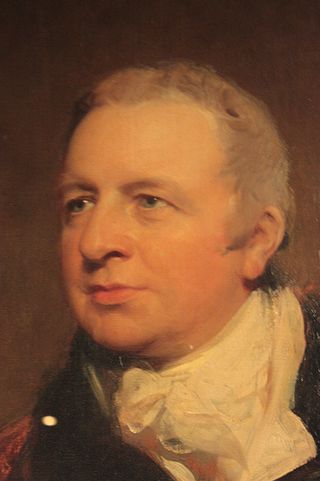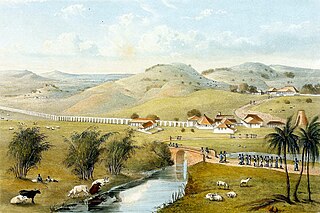
The Baptist War, also known as the Sam Sharp Rebellion, the Christmas Rebellion, the Christmas Uprising and the Great Jamaican Slave Revolt of 1831–32, was an eleven-day rebellion that started on 25 December 1831 and involved up to 60,000 of the 300,000 slaves in the Colony of Jamaica. The uprising was led by a black Baptist deacon, Samuel Sharpe, and waged largely by his followers. The revolt, though militarily unsuccessful, played a major part in the abolition of slavery throughout the British Empire.

The Slavery Abolition Act 1833 was an Act of the Parliament of the United Kingdom which provided for the gradual abolition of slavery in most parts of the British Empire. It was passed by Earl Grey's reforming administration and expanded the jurisdiction of the Slave Trade Act 1807 and made the purchase or ownership of slaves illegal within the British Empire, with the exception of "the Territories in the Possession of the East India Company", Ceylon, and Saint Helena. The Act was repealed in 1998 as a part of wider rationalisation of English statute law; however, later anti-slavery legislation remains in force.

Slavery in the British and French Caribbean refers to slavery in the parts of the Caribbean dominated by France or the British Empire.

Drax Hall Estate is a sugarcane plantation situated in Saint George, Barbados, in the Caribbean.

George Hibbert was an English merchant, politician, slave-owner, ship-owner, amateur botanist and book collector. With Robert Milligan, he was also one of the principals of the West India Dock Company which instigated the construction of the West India Docks on London's Isle of Dogs in 1800. He also helped found the Royal National Lifeboat Institution in 1824.

Charles Rose Ellis, 1st Baron Seaford was a British politician, sugar planter, and slave holder.
London Bourne (1793–1869) was a former Barbadian slave who became a wealthy merchant and abolitionist.
Joseph Foster Barham, the younger was an English politician, merchant and plantation owner.

Henry Dawkins II was a Jamaican plantation and slave owner and Member of the Parliament of Great Britain (MP).
McGeachy is a surname. Notable people with the surname include:

Trinity was a plantation in colonial Jamaica, located south of Port Maria, in Saint Mary Parish, one of several plantations owned by Zachary Bayly that formed part of the area known as Bayly's Vale. By the early nineteenth century, over 1,000 people were enslaved there producing mainly sugar and rum for which a mile-long aqueduct was built by Nathaniel Bayly to supply water for the refining process.

Albion was a sugar plantation in Saint David Parish, Jamaica. Created during or before the 18th century, it had at least 451 slaves when slavery was abolished in the British Empire in 1833. By the end of the 19th-century it was the most productive plantation in Jamaica due to the advanced refining technology it used. By the early 20th century, however, its cane sugar could not compete with cheaper European beet sugar, and it produced its last sugar crop in 1928. It subsequently became a banana farm for the United Fruit Company.

Thomas Harrison was the first Government Surveyor of Jamaica. His maps have become an important historical resource for the island.
William Dickinson (1771–1837) was an English politician, in parliament from 1796 to 1831.
Emanuel Lousada was a London-born Jewish merchant, slave plantation owner and public office holder with interests in Jamaica and Barbados. He was the High Sheriff of Devon from 1842 until 1843, making him the first Jew to hold the title in a county outside of the Sheriff of London, which had been held first by David Salomons in 1835. Lousada was associated with Peak House, Sidmouth. Lousada owned more than 400 African slaves on his sugarcane plantations in the British West Indies at the time of the Slavery Abolition Act 1833. He died a wealthy man, leaving £100,000 in his will.

Thomas Daniel was a slave owner and sugar merchant in Bristol who was known as the "King of Bristol" and later in life "Father of Bristol" because of his omnipotence in corporate affairs for over 50 years.
William Atherton, was a merchant and wealthy landowner from Lancashire, England, who operated and co-owned sugar plantations in the former Colony of Jamaica. He was a slave owner, as well as an importer of slaves from Africa.
Green Park Estate was one of several sugar plantations owned by William Atherton and his heirs. It was located in Trelawny Parish, south of Falmouth, Jamaica. By the early nineteenth century, at least 533 people were enslaved there producing mainly sugar and rum.











